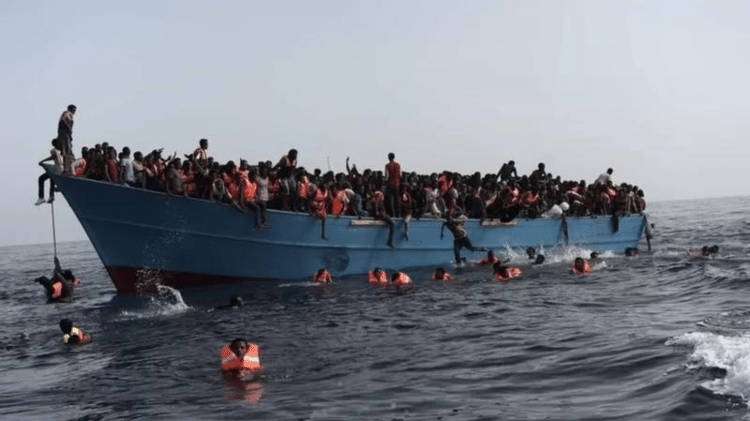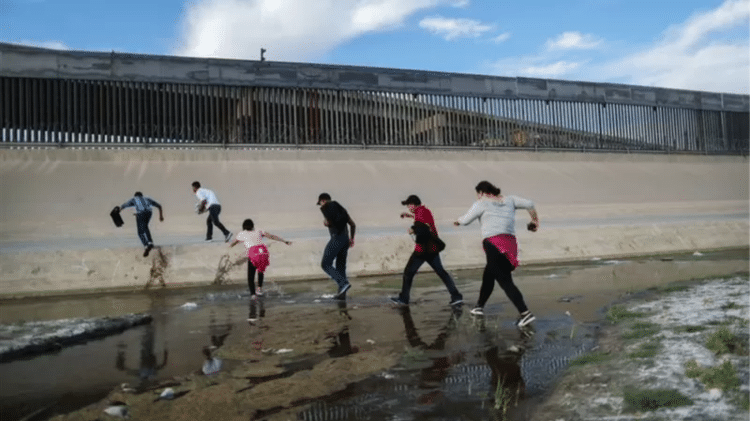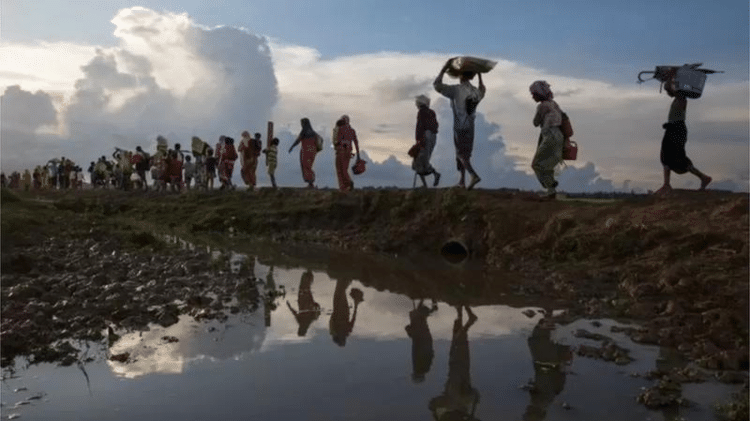Within days, two deadly tragedies involving people trying to cross international borders took place.
On Friday, 06/24, at least 23 people were killed as a large crowd tried to cross a border fence from Morocco to the Spanish enclave of Melilla in North Africa. Three days later, police in the city of San Antonio, in the United States, found the bodies of at least 46 people in an abandoned truck.
The number of crossings on the world’s major migration routes seems to be increasing after the effects of the Covid-19 pandemic, which has caused many countries to impose strict entry restrictions.
Experts warn that this will likely result in an increasing number of deaths. The International Organization for Migration (IOM), a UN agency, estimates that around 50,000 migrants have died or gone missing while trying to reach destinations such as the United States or the European Union since 2014. The agency believes the actual death toll may be even higher.
So what are the world’s most dangerous roads for immigrants? And for what reasons?
Central Mediterranean
According to IOM, this is the world’s deadliest route for migrants. It is estimated that more than 19,500 people have died trying to cross the Mediterranean from North Africa to Europe since 2014.
Crossing attempts often take place on overcrowded and improvised vessels such as rubber boats, which makes the journey dangerous and potentially deadly.
Ships are often run by criminal gangs and human traffickers.
In Tunisia, which is the main exit point for migrants trying to reach Europe via the Central Mediterranean, besides Libya, there is even a cemetery reserved for those who drowned in the sea.
“It makes me very sad to see these graves here,” Vicky, a Nigerian immigrant hoping to travel from Tunisia, told AFP news agency while visiting the cemetery.
“When I saw this [as sepulturas]I’m not sure I want to cross the sea anymore,” he added.
Institutions like the IOM fear that other migrants will not be deterred.
Spokesperson Safa Msehli said, “Migrant outflows in the Central Mediterranean continue. The biggest concern is the consistently high death toll in this most dangerous sea crossing in the world. In the absence of concrete intervention by the states, it continues to die.” IOM. .
The European Border and Coast Guard Agency Frontex reported that since 2015, around 300,000 people have been rescued trying to use this route.
African interior roads
For many African immigrants, the dream of reaching Europe begins with a journey that includes the continent itself, often a long journey across the Sahara Desert on their way to North African countries.
Harsh environmental conditions are a major threat: IOM estimates that crossing the Sahara was responsible for nearly 5,400 deaths between 2014 and 2022.
“You see people dying in the desert. Some die because they run out of energy. Others die of thirst,” said Abdullah Ibrahim, a migrant, who told the AFP news agency about his transition experience.
Another major threat to immigrants is the large number of human trafficking gangs operating in the region.
“Violence at the hands of smugglers, traffickers and border officials in the region also accounts for a significant proportion of recorded migration deaths in the Sahara Desert,” IOM said in its latest report on the subject.
US-Mexico border crossing
While immigration routes in America are not just about traveling to the USA, for most people looking for a new home in the area, this is the ultimate destination.
The US-Mexico border presents a major challenge: The area is famous for its inhospitable geography, including desert areas, and immigrants often try to cross into the US via the dangerous Rio Grande River, which crosses part of the border.
Drowning is the leading cause of death on this route, with more than 3,000 deaths since 2014, according to IOM estimates.
Those trying to avoid natural hazards by hiding in vehicles face a variety of dangers, such as those that led to deaths in San Antonio.
“Recently, there have been other incidents that have caused great loss of life on the migration routes to the United States,” said IOM spokesperson Safa Msehli.
In December 2021, 56 immigrants died in Chiapas, Mexico, when they were hit by the truck they were in.
“IOM continues to be concerned about the dangers of immigration from Latin America to the United States,” said Msehli.
Asian routes
The IOM says that in 2020, four out of every ten migrants worldwide were born in Asia, and the continent has several major migration routes.
Nearly 5,000 people have been killed or missing in Asia over the past eight years, according to the UN agency.
Most of these deaths include Rohingya and Bangladeshi migrants who use sea routes crossing the Bay of Bengal and the Andaman Sea to try to reach safety in neighboring countries and even reach Europe.
The challenges they face during transitions can be extreme.
“We were hungry. There was nothing to drink, no drinking water. There was no food, no rice, we couldn’t eat. It was like this for a month at sea,” said 37-year-old Rohingya refugee Muhammed Ilyas. According to the news of the AFP news agency, he was rescued by the Indian navy after the boat he was traveling on sank.
As with other routes, these migrants are often victims of exploitation by human trafficking gangs.
Another problematic route is the border between Iran and Turkey, which has seen an unprecedented influx of Afghan migrants since the Taliban regained control of Afghanistan in August last year.
The UN refugee agency (UNHCR) says more than 2 million Afghans are registered as refugees in Iran and neighboring countries.
– This text was first https://www.bbc.com/portuguese/internacional-61979671
source: Noticias
[author_name]



